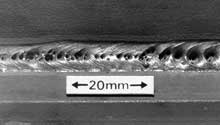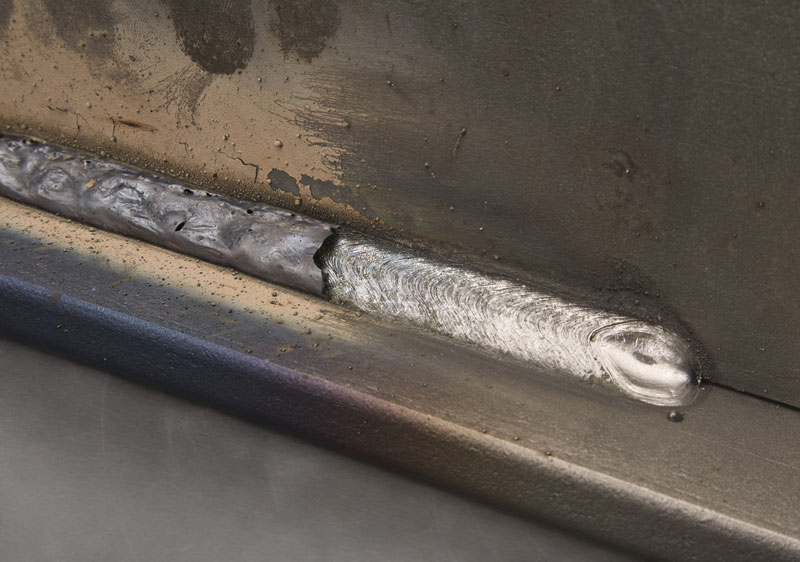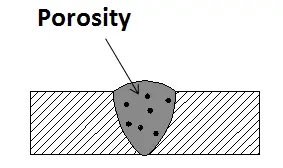What is Porosity in Welding: Best Practices for Staying Clear Of Permeable Welds
What is Porosity in Welding: Best Practices for Staying Clear Of Permeable Welds
Blog Article
Understanding Porosity in Welding: Exploring Causes, Results, and Prevention Strategies
As specialists in the welding industry are well conscious, recognizing the causes, results, and prevention techniques connected to porosity is essential for accomplishing robust and trusted welds. By diving into the root causes of porosity, analyzing its damaging results on weld high quality, and exploring reliable avoidance strategies, welders can improve their understanding and skills to create premium welds consistently.
Typical Reasons For Porosity
Contamination, in the type of dust, grease, or rust on the welding surface area, produces gas pockets when warmed, leading to porosity in the weld. Inappropriate shielding happens when the protecting gas, commonly used in procedures like MIG and TIG welding, is incapable to totally secure the liquified weld pool from reacting with the surrounding air, resulting in gas entrapment and succeeding porosity. Furthermore, insufficient gas protection, often due to wrong flow prices or nozzle positioning, can leave components of the weld vulnerable, enabling porosity to form.
Results on Weld Top Quality
The presence of porosity in a weld can dramatically jeopardize the overall high quality and integrity of the welded joint. Porosity within a weld produces spaces or dental caries that weaken the structure, making it more prone to fracturing, deterioration, and mechanical failure. These voids act as tension concentrators, minimizing the load-bearing capability of the weld and boosting the chance of premature failing under applied tension. Furthermore, porosity can likewise function as potential sites for hydrogen entrapment, more worsening the degradation of the weld's mechanical residential properties.
Additionally, porosity can impede the efficiency of non-destructive testing (NDT) methods, making it challenging to find other flaws or discontinuities within the weld. This can result in significant safety worries, specifically in vital applications where the structural integrity of the welded components is extremely important.

Prevention Techniques Review
Given the detrimental influence of porosity on weld quality, efficient avoidance techniques are critical to preserving the structural integrity of bonded joints. In addition, picking the appropriate welding parameters, such as voltage, existing, and take a trip rate, can assist minimize the risk of porosity development. By integrating these prevention techniques into welding methods, the event of porosity can be significantly decreased, leading to more powerful and more important source reputable bonded joints.
Relevance of Appropriate Protecting
Correct protecting in welding plays a crucial role in protecting against climatic contamination and guaranteeing the integrity of bonded joints. Shielding gases, such as argon, helium, or a mixture of both, are generally utilized to protect the weld swimming pool from reacting with components in the air like oxygen and nitrogen. When these reactive aspects come into call with the hot weld pool, they can create porosity, causing weak welds with minimized mechanical properties.

Poor securing can lead to numerous problems like porosity, spatter, and oxidation, compromising the architectural stability of the bonded joint. As a result, sticking to appropriate securing methods is essential to create high-quality welds with very little defects and make sure the longevity and dependability of the bonded components (What is Porosity).
Tracking and Control Techniques
Just how can welders efficiently keep an eye on and regulate the welding procedure to make certain optimum outcomes and avoid issues like porosity? By constantly checking these variables, article source welders can recognize discrepancies from the excellent conditions and make instant adjustments to stop porosity development.

Furthermore, executing correct training programs for welders is important for keeping an eye on and managing the welding process efficiently. What is Porosity. Enlightening welders on the significance of maintaining constant specifications, such as correct gas securing and take a trip rate, can aid prevent porosity issues. Regular assessments and certifications can likewise make sure that welders excel in official statement monitoring and controlling welding processes
Additionally, the use of automated welding systems can improve surveillance and control capacities. These systems can exactly manage welding specifications, lowering the possibility of human mistake and making certain regular weld top quality. By incorporating innovative tracking modern technologies, training programs, and automated systems, welders can successfully keep an eye on and regulate the welding process to decrease porosity problems and achieve top notch welds.
Final Thought

Report this page